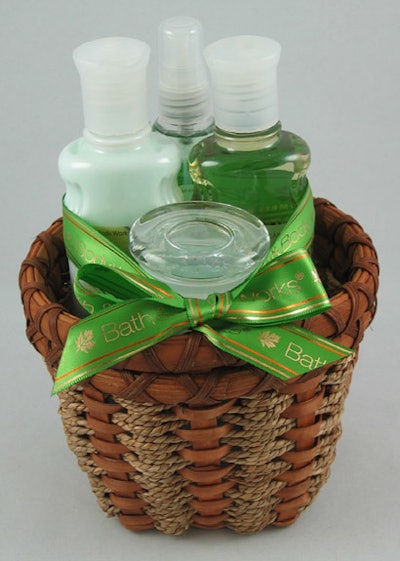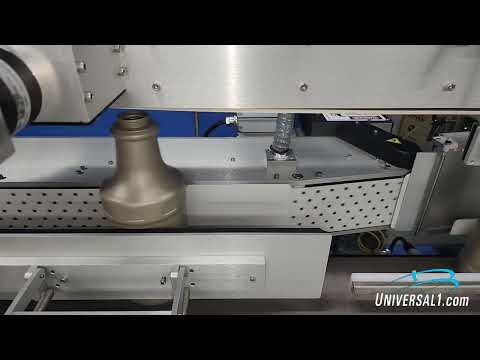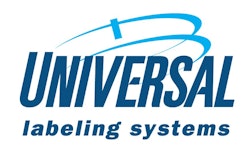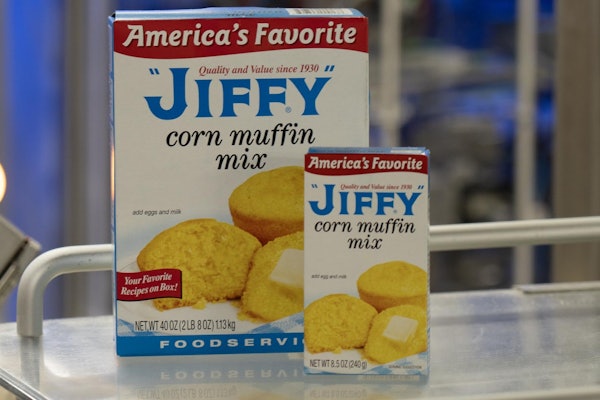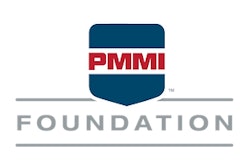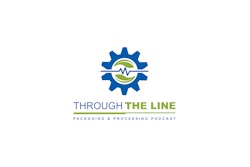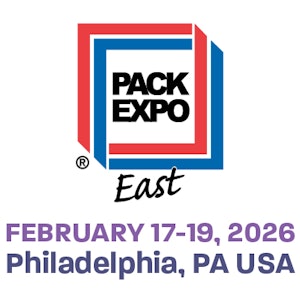Private-label brands are posing one of the most lucrative—and challenging—areas of growth in contract packaging. Anecdotal evidence indicates that private label’s share of total production at some U.S. co-packing plants has risen to double-digit levels; one co-packer reports that its retailer-brand production has skyrocketed from 2% to 20% over the past seven years.
Recent industry data show that private label is growing not only in dollar volume but also in product value. Retailer brands are competing with national equivalents and, increasingly, in the perception of being upscale. How? By improving their packaging both graphically and structurally and shifting to formats like stand-up pouches and incorporating spouts, slider zippers, and other “add-ons” available through contract packagers.
But today, providing a national-equivalent product is a contract packager’s minimum price of entry into the realm of private label. Some retailers have raised the bar for the private-label brands to surpass national brands in perception of quality, with correlating increases in expectations for contract packaging capabilities.
Besides a more sophisticated look, retailers are insisting that contract packagers be proficient in trends analysis, product forecasting, and inventory management. Some are also asking co-packers to take the lead in packaging material pricing, suggesting new product lines, and being on the lookout for improvements and alternatives in resins and board stocks.
Factors driving the evolution in retailers’ private-label strategies, and their use of outsourced services, bear watching among companies that operate national brands as well. Retailers’ emerging private-label strategies are flooding the market with new products and moving into categories in which national brands have long dominated. But product manufacturing and packaging are outside retailers’ core competency. That’s where contract packaging enters the picture.
Retailers’ demands
Publix Super Markets Inc., Lakeland, FL, has been upgrading packaging for its private-label products during the past three years for its 914 grocery stores in Florida, Georgia, South Carolina, Alabama, and Tennessee. These products are priced 10% to 30% lower than competing national brands, but packaging sells the value with plenty of white space, clean lines, and simple but clever messages, says Maria Brous, Publix spokesperson.
Co-packers supply about 70% of Publix’s retailer-brand products, and services vary by category. Some co-packers act primarily as suppliers by providing packaged products like canned or frozen vegetables, sugar, or cheese that meets the retailer’s specifications. In other cases, Publix relies on contract packagers to analyze industry trends and to recommend new items for cereals, over-the-counter healthcare products, condiments, and dressings, Brous says.
For Bath & Body Works, contract packagers serve two important purposes. “We own the bottles that our product comes in, but all the manufacturing and packaging is outsourced. We have no manufacturing facilities whatsoever,” says Doug Miller, production and operations manager at Beauty Avenues, Reynoldsburg, OH, a personal care sourcing company serving Bath & Body Works.
Besides manufacturing and packaging services, co-packers also help Bath & Body Works create package designs that work in manufacturing and suggest steps that can save the company money in packing out its products. Among these products are 10 million exclusive personal care products gift sets, such as four Pleasures products bundled together with festive green and gold ribbon in what appears to be a circular PET base. The base sits atop a plastic foam cube inside a wicker basket—all filled and assembled by contract packagers.
By eliminating even one step in packaging or saving a penny or two per package in production, the savings are significant, Miller explained at a recent conference called Proof: Market Research and Strategy Development for Package Design. In one project, co-packers accompanied the retailer’s creative team to China, where materials are sourced for a zippered pouch in its Wexler skin care product line. One co-packer suggested the zippers on the pouches be set in the open position when they arrived at U.S. co-packing plants so products could be filled inside them faster. “It didn’t have any effect on the design of the bag, but it saved us money,” Miller notes. By modifying the bag size by a sixteenth of an inch, the packaging line was able to fill the bags twice as fast.
By sourcing contract packagers, Safeway Inc., Pleasanton, CA, believes it can get its own new products to shelf in its 1,775 stores in the United States and Canada more nimbly than national brands. Its recently launched Eating Right line, rolled out in most of the supermarket’s departments, is a case in point. The line includes frozen dinners, cheese, soup, chips, cereal, and juice, says Eric Ashworth, chief strategy officer at Anthem Worldwide. The design firm creates brands, marketing plans, and packaging for Safeway by working with manufacturing vendors, including co-packers.
Safeway’s private-label lines also include organic, meat, dairy, and pet food products. “No traditional CPG (consumer packaged goods) company can operate in all those categories,” Ashworth says. “CPG companies have to spend a lot of money to launch a new brand, but Safeway owns the shelf. It just puts its product on the shelf, and they’re launched.”
Meeting retailer standards
Co-packers already have a leg up in the private-label industry because they can provide national-brand equivalents in smaller quantities than those available from other manufacturers, says Jason Cartwright, president of Tender Corp. That capability helps retailers looking to launch new private-label brands test the waters.
Co-packers and manufacturers like Tender offer large-scale manufacturing services for high-volume runs and smaller operations for products produced and packaged in small batches. Tender packages private-label insect repellent, insect-bite cream, and other over-the-counter products like sunscreen and aloe vera lotion for retailers. The company also supplies products to distributors that sell private-label goods to retailers.
During the past seven years, Tender has seen its private-label side grow from 2% to 20% of its overall business. Cartwright attributes the increase to private-label growth across many product lines in many retailers’ stores. Despite that growth, winning a private-label manufacturing and packaging contract is a competitive endeavor today.
Co-packers need to offer services beyond packaging to win private-label contracts, Cartwright says. Their chances for success increase if they are first to deliver a particular private-label product to a retailer. Tender wins its private-label business by offering a four-pronged approach: marketing, formulating, manufacturing, and packaging.
Tender makes the initial overture to a retailer by suggesting it carry a private-label product, like sunscreen lotion, that Tender has proved it can provide. Tender also formulates, manufactures, and packages branded products, which gives the co-packer a base knowledge of the retail industry and shows retailers Tender has the proper credentials for the job.
At that first meeting with the retailer, Tender presents a well-researched marketing case that outlines why and where the product fits in the marketplace and in the retailer’s stores.
“We’re more proactive rather than reactive,” Cartwright says. “We research what’s hot in terms of new product launches and trends. We then approach the retailer and say, ‘If you haven’t considered this, here’s the pricing, and here’s how you’ll compete.’”
Typically, Tender presents package ideas to a retailer even before winning its business. When a contract is signed, the graphics department works to further refine that image until it meets retailers’ needs, Cartwright says.
Retailers seek a cohesive look across all product lines for their private-label packaging. Often a retailer will tie private-label packages, no matter how disparate the products, by including logo or name across the same area on the package. Retailers give Tender Corp. guidelines on packaging color and image consistency. The co-packer’s graphics department creates packaging following those guidelines.
Tender’s on-staff chemists and pharmacists formulate national-brand equivalents. The co-packer offers 2,000 formulas for retailers to choose from, or formulators can create a product to a retailer’s specifications.
“In today’s market, contract packagers must bring the hottest, latest formulas—sometimes better than national-brand equivalent—to the retailer to win the business,” Cartwright says.
The face of private label is continuing to change in ways that could impact both contract packaging and national brands. The successful private-label strategies of several large, high-performance retailers could trigger a shift in the market, increasing private label to a 26% dollar share and moving $55 billion in annual sales from national brands to private label, according to a June 2007 report from McKinsey & Co. The report was presented at the Private Label Manufacturers Association’s (www.plma.com) annual trade show in November in Chicago.
The report identifies retailers that use private label as a key differentiator for building shopper loyalty. These retailers have an average private-label dollar share of 22%, compared with the national average of 16%. McKinsey’s research shows that “the bulk of retailers” are lagging behind, with a dollar market share of less than 16%. Trailing the pack is a set of retailers that remain focused on national brands and have a private-label dollar share of 11%. If these chains begin to emulate the private-label share leaders and increase store brands to drive growth and build consumer loyalty, McKinsey’s report concludes, $55 billion in annual sales could be up for grabs.
McKinsey’s report suggests that if retailers do go after this “value at stake,” store-brand dollar share could reach 24% by 2016. A shift of this magnitude is consistent with the experience of store brands in Europe, according to McKinsey.
Emerging players
Two co-packers looking to grow further in private label are Pack Ryt Inc. and Roberts Packaging. Jack Stutz, Pack Ryt president, welcomes the flexibility and potential cost savings private-label packaging can bring.
“When you do branded,” Stutz says, “the brand people call the shots on everything, from source to commodity to packaging to how it all works together. That source and supplier might not be the best ones. With private label, we could source commodities and get the best quality at the best price. Private label is more independent. We put together a full turnkey package and present it to a retailer.”
Roberts Packaging already packages private-label goods on a small scale with a few organic products on its C-series standup pouch machinery lines. Benjamin Fouch, sales executive for the company’s contract packaging division, is actively looking to grow its private-label business.
“Private label is a very large industry, with more stores doing their own style,” Fouch says. “This is a growth area for Roberts Packaging.” “Being a national brand equivalent provider is almost a baseline expectation for every co-packer out there,” Cartwright says. ‘You’ve got to show you can create packaging to help sell it.”
Contract packagers also are stepping up with shipping and forecasting software applications that can forecast manufacturing needs and manage inventory. Use of advanced software is almost a necessity when competing for private-label business. Inventory management is the contract packager’s responsibility; product is shipped directly to stores rather than to distribution centers when packaging for national-brand owners.
“They’ll give you a forecast, and you need to keep them in stock at the levels they require,” Cartwright says. “That’s a lot different than shipping 100,000 cases to Johnson & Johnson. Now you’re managing a retailer’s store inventory.”
Retailers are sensitive about stocking to proper inventory levels. Warehouse too much safety stock and a retailer pays needlessly for storage; too little, and it can’t successfully meet orders. In the process, customer service and repeat business are jeopardized.
Retailers use forecast-planning software to determine the correct level of inventory to maintain in warehouses and stores, and co-packers tie into that software to get shipments to warehouses on time. Tender has an electronic data
exchange system in place with every retailer in its customer base.
Safety is an issue
Because retailers have stamped their names on in-house brands, they’re particularly concerned with food safety, says Publix’s Brous. When shopping for a private-label co-packer, the supermarket chain checks out production-plant audits and ensures in other ways that the food produced will meet exacting standards.
When choosing a co-packer, Publix compares the quality and range of services it provides with other suppliers of the same product, Brous says. The supermarket chain also assures a prospective co-packer can manufacture and package product in the volumes it requires.
Anthem, in working with Safeway’s private-label program, looks for co-packers willing to collaborate closely.
“There’s a strategic advantage for packaging partners and vendors that are adaptive and that embrace private-label products,” Ashworth says. “Instead of making a new opportunity to fit an old model, we want to work with people who can think differently.”
The author, Jean Thilmany, is based in St. Paul, MN. Contact her at [email protected].
